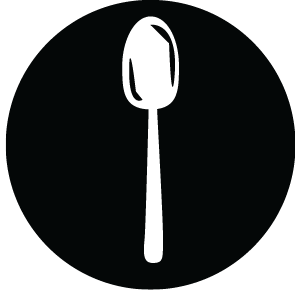In the world of gastronomy, the marriage of food and wine is an art form, where flavors dance harmoniously on the palate. This past month, I had the pleasure of attending a Northwestern Norris Mini Course hosted by Lexi McKean, a mixology educator with a passion for unraveling the intricate tapestry of food and wine pairings. The class costs $49 for Northwestern students and $59 for the general public. Over the span of two hours, you get six glasses of wine: a bubbly white, a sauvignon blanc, a rosé, two reds and a sweet port. To accompany each is a personal charcuterie board with a mix of cheeses ranging from soft goat cheese to nutty cheddar and sweet treats like a cherry jam, a green apple and chocolate freeze-dried strawberries.

McKean found her profession as a mixologist educator when she was bartending in college and realized that wine and spirits have a deeper cultural value than simply hanging out at bars and being social with friends. As she learned more about the industry and cultural significance, she became more passionate about educating and sharing what she learned.
“Wine education turns drinking from a fun, social thing to something enjoyed deep in your soul,” McKean said.
While many of-age college students may not consider too seriously the flavor profiles of the wines they drink and how they pair with food, having an experienced mixologist guide me through the journey enlightened me to the sensitivities of my taste buds and how they react to different flavors.
To start off the class, McKean handed out a pamphlet detailing the different wines we’d try and our five taste receptors – sweet, salty, acidic, bitter, umami. As we went along trying all the wines, we were encouraged to leave notes on what flavors we felt were present in each wine, and what items from the charcuterie board complemented it. McKean ordered the wines specifically, starting with a light, bubbly white, then a sauvignon blanc and rosé, and ending with deeper flavors, two red wines and a sweet, thick port.

The goal of food and wine pairings is to complement an opposite taste receptor, and for a well-balanced bite, you want to satiate as many of the taste receptors as possible. The science boils down to seeing what flavors are present in your food and then selecting a wine to serve that highlights a different flavor. For each wine, McKean suggested specific items on the charcuterie board that are typically well-paired. For example, McKean suggested pairing a white, acidic wine with something sweet like a honey goat cheese and a full-bodied, bitter red with something packed with umami, like a steak. She also encouraged us to try non-traditional pairings to see how they tasted. While I was at first dubious of noticing anything different between mixing combos, I was surprised to find I loved green olives with a bubbly white, but hated it with the sauvignon blanc. The tartness of the bubbly white complimented the salty flavor of the olives, but the sweetness of the sauvignon made the olive taste bitter and harsh. But really, it all comes down to personal preference, McKean explained.
“That’s the most crucial thing when thinking about food and wine pairing,” she said. Certain combinations that certain people may like, others may hate, and vice versa.
If you want to host your own wine tasting, McKean suggests you order your wines as she did in class, from lightest–whites to fullest–reds. She also noted that as you continue on to each wine, you can still taste the flavors from the previous one, so to ensure a smooth progression, starting with wines that don’t have as intense of a mouth-feel is best.
“The last thing on your palate is the first thing you won’t taste in your next bite or sip,” McKean said. “You want to go on a flavor journey and not lose anything.”
But what’s even more important than the order of wines in a tasting is how you combine the food and vino.
“Always take your first sip of wine before eating anything,” McKean emphasized in class. That way you can see what flavors are missing in the wine and then decide what food to pair it with. Use the wine as a building block to see what notes you want to complement it with.
In spring quarter, McKean will be teaching multiple food and wine pairing classes and mini-course on the history of Chicago beer. You can follow her at @birdy.barfly on Instagram to keep up with her content–she plans to resume private wine tasting education courses in the coming months.

As a final piece of advice McKean kept it simple, “Have fun with it.” She wants people to recognize and appreciate the culture and cultivation it creates and breed these wines.
“Now we get to go out to bars and drink things that have been around for centuries, so we have a connection with it. It’s not just a means to an end, it’s a celebration of life and culture.”



